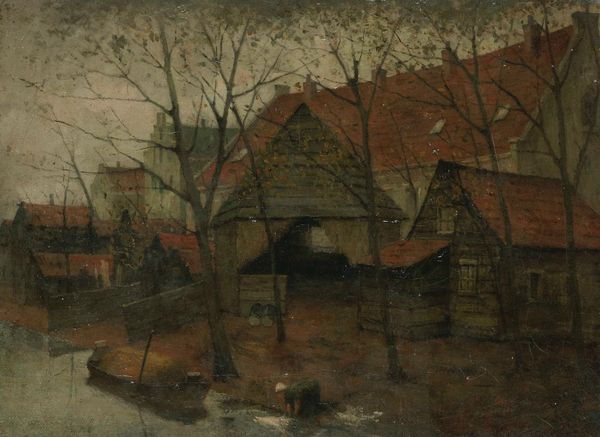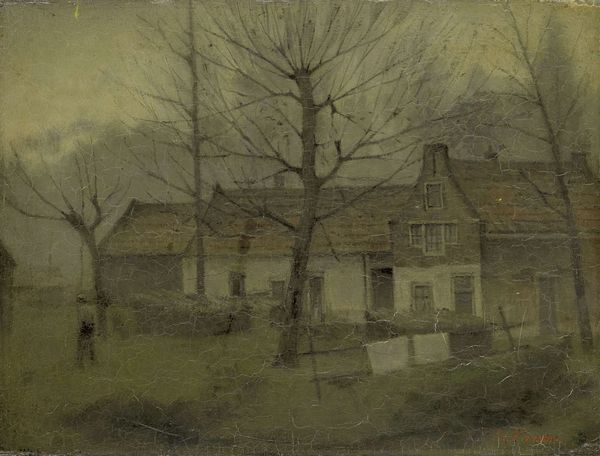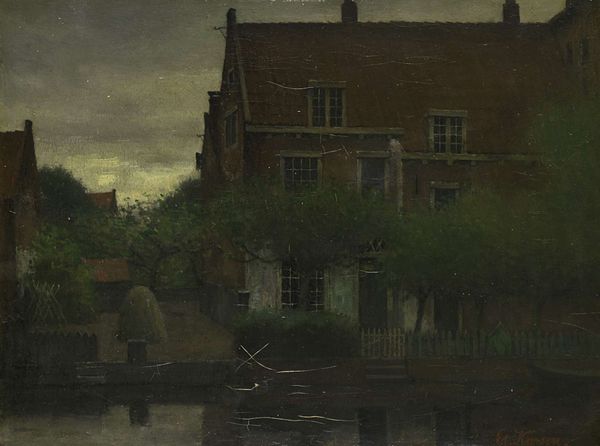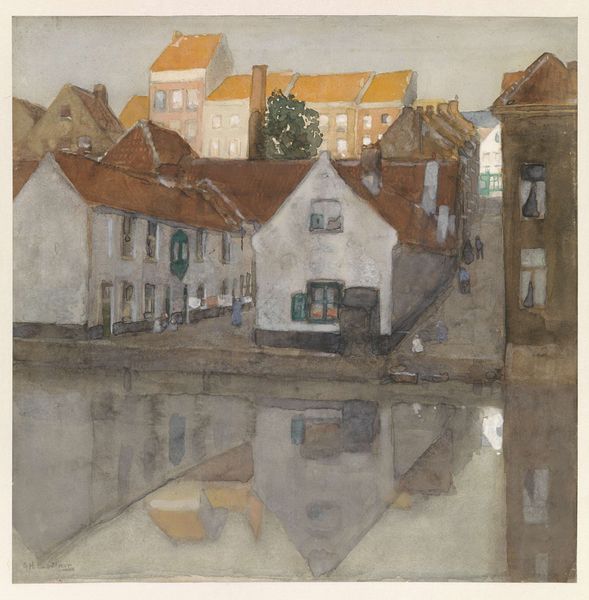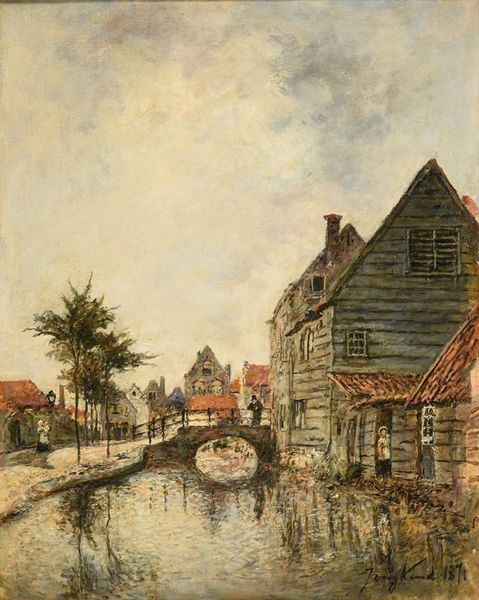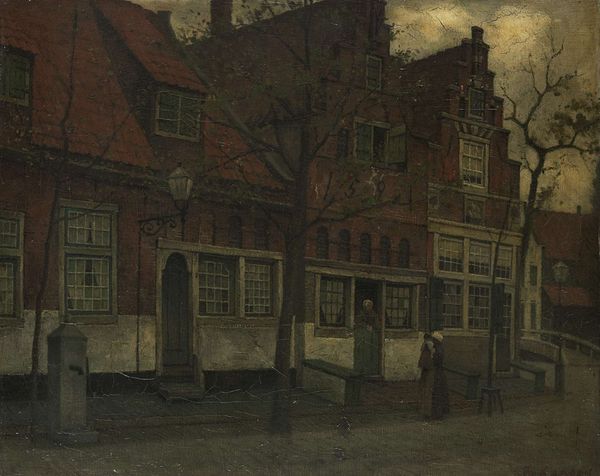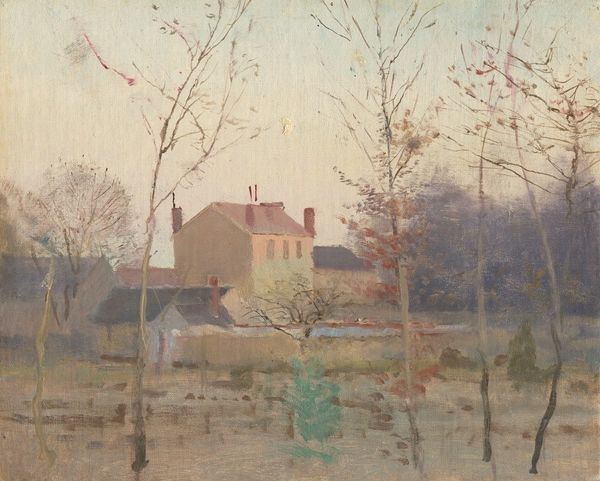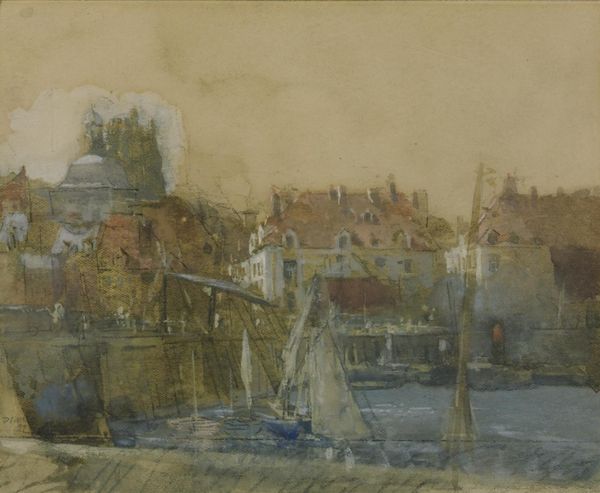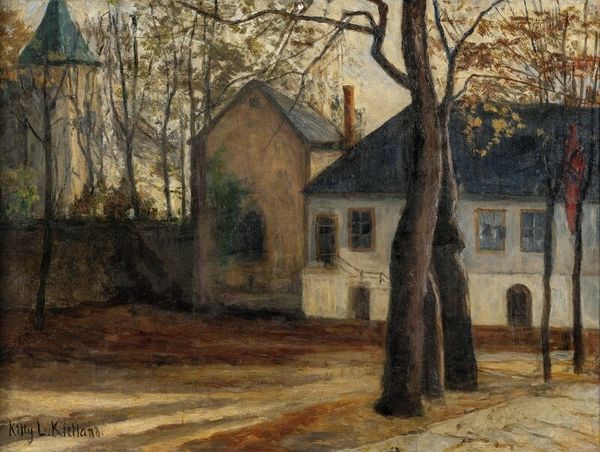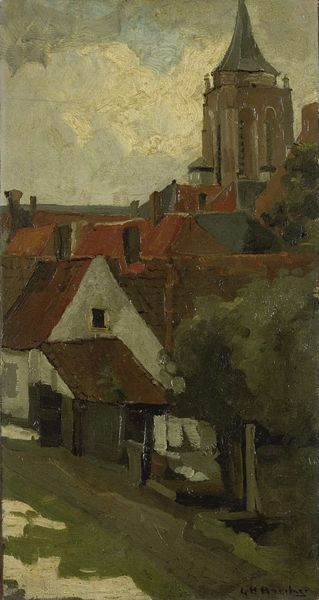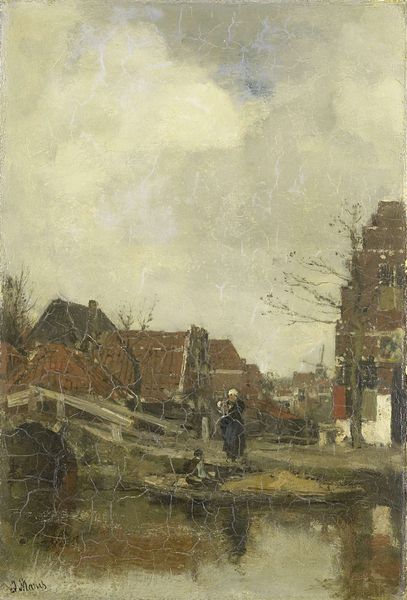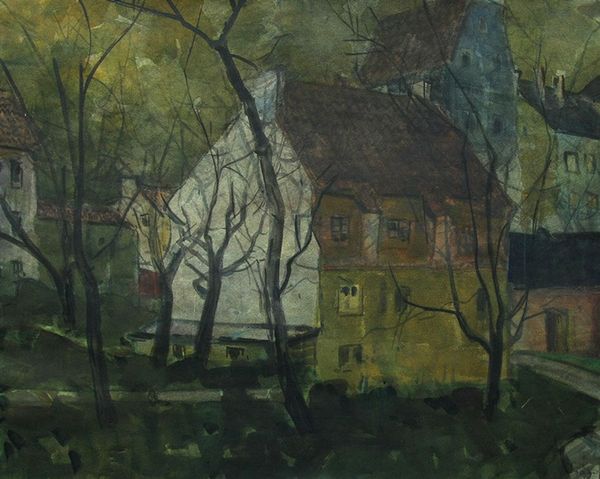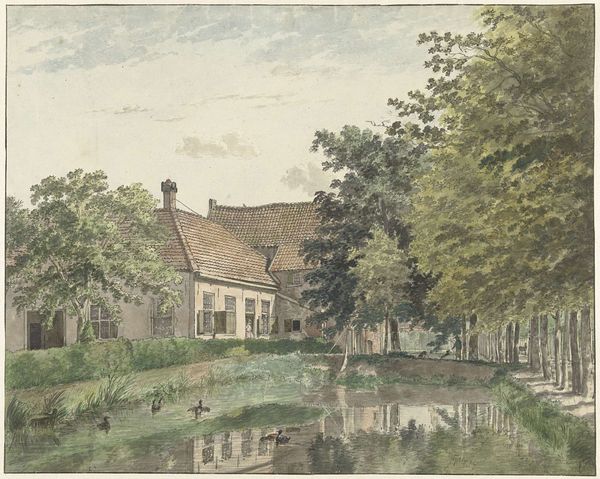
Dimensions: height 41 cm, width 57.5 cm, depth 13 cm
Copyright: Rijks Museum: Open Domain
Historian: So, here we have Eduard Karsen’s “View in a Village,” probably painted between 1885 and 1900, using oil paint, typical of the time. It presents a quiet, almost melancholic village scene. Artist: Mmm, “melancholic” nails it. That gray! It feels like looking at a memory, like sifting through old photographs in your attic, right? A boat rests on the still water of the canal and there is a house that stares back with dark window eyes. Historian: Absolutely. Karsen, while not as famous as some of his contemporaries, was very much working within the aesthetic conversations of late 19th-century Holland. We can certainly place this within the tradition of Dutch Realism and, indeed, early Impressionism with its subdued palette. I see this painting in the context of urbanization of the period. Artist: "Urbanization” can sound dry, but you are so right. Looking closely I feel Karsen wasn’t just painting pretty houses and charming reflections. He’s captured a feeling, almost a weariness. Look at the bare trees scratching at the sky and those muted tones of brick and sky and water that you just want to plunge your hands into! Historian: Well put! This wasn’t simply about objective representation, but rather a mood, an atmosphere. The artist subtly expresses the tension between tradition and progress. The village with its familiar architecture looks almost suffocated. Notice that while the composition is naturalistic, it is equally stylized to suit the feeling of things not quite blending. Artist: Precisely. And it brings questions to the surface. What does 'home' even *mean* when everything is shifting and disappearing? Is it a place, a feeling, a memory? Like those wispy brushstrokes create more questions than they answer... and a strange feeling like everything is about to vanish. Historian: That's very insightful. As industrialization sped up, it became even more important for people to define and perhaps re-romanticize the traditional world to preserve their identity. That would very naturally lead to painting such subjects. Artist: The boat, it occurs to me, adds to this romantic idea because if you look closely, there doesn’t appear to be a rower… It’s as though the boat will carry you somewhere else, away, beyond… I get such a sense of being between things when I stare at it! Historian: This sense of in-between is powerful. It offers us a chance to reflect on change and continuity—what remains and what we carry forward. Artist: Leaving me, as an artist, thinking, “what remains to capture from *our* worlds.” Historian: And for me, as a historian, reflecting on how artworks give social value to memories as social and cultural forces shift.
Comments
No comments
Be the first to comment and join the conversation on the ultimate creative platform.
